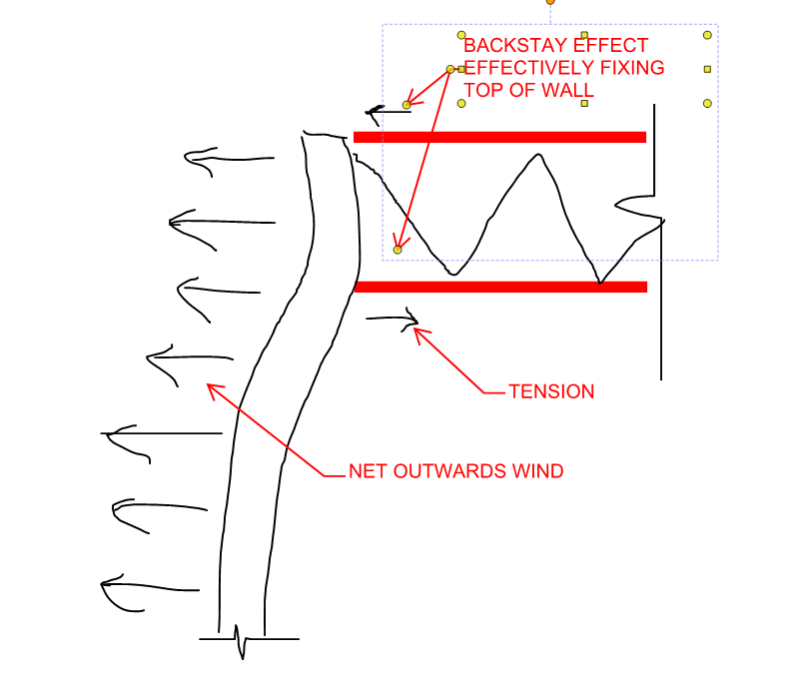kipfoot
Structural
- Oct 25, 2007
- 493
I was contacted to evaluate a dumb detail condition where steel angles have puled away from the block wall.
It's a roof system with open web steel joists supported by a concrete block wall. The joist bottom chords are welded to the steel angles, which are fastened to the block with 1/4" expansion anchors. The joists span about 42' and the masonry wall is approx. 26' from the slab to the underside of deck. I think this building is about 20 years old. This is mid-atlantic USA: hot summers, mild but below freezing winters.
The angles seem to have pulled away from the wall, 1/2" in the worst case, causing the anchors to fail and spall the face of block. I'm hoping you'll have some guesses about what might have led to this condition. On the attachment I'm showing the detail as it exists and a few photos.
Possibilities I'm thinking:
-uplift on the trusses? I'd expect the bottom chord to push out on the wall with this detail, but this seems to have pulled inward.
-movement of the wall? It's ridiculously tall for an 8" block + 4" brick in my opinion, but I wouldn't expect this movement near the top.
-temperature movement? Maybe it was a hot summer day when the weld was placed.
I haven't done calculations to test these ideas. I don't know if this is a recent occurrence or if someone only recently noticed or decided to call someone. There's also moisture in the masonry, causing blistering of the interior paint.
It's a roof system with open web steel joists supported by a concrete block wall. The joist bottom chords are welded to the steel angles, which are fastened to the block with 1/4" expansion anchors. The joists span about 42' and the masonry wall is approx. 26' from the slab to the underside of deck. I think this building is about 20 years old. This is mid-atlantic USA: hot summers, mild but below freezing winters.
The angles seem to have pulled away from the wall, 1/2" in the worst case, causing the anchors to fail and spall the face of block. I'm hoping you'll have some guesses about what might have led to this condition. On the attachment I'm showing the detail as it exists and a few photos.
Possibilities I'm thinking:
-uplift on the trusses? I'd expect the bottom chord to push out on the wall with this detail, but this seems to have pulled inward.
-movement of the wall? It's ridiculously tall for an 8" block + 4" brick in my opinion, but I wouldn't expect this movement near the top.
-temperature movement? Maybe it was a hot summer day when the weld was placed.
I haven't done calculations to test these ideas. I don't know if this is a recent occurrence or if someone only recently noticed or decided to call someone. There's also moisture in the masonry, causing blistering of the interior paint.

